The Best Franciacorta Wines | Italy Gets Serious About Sparkling Wine
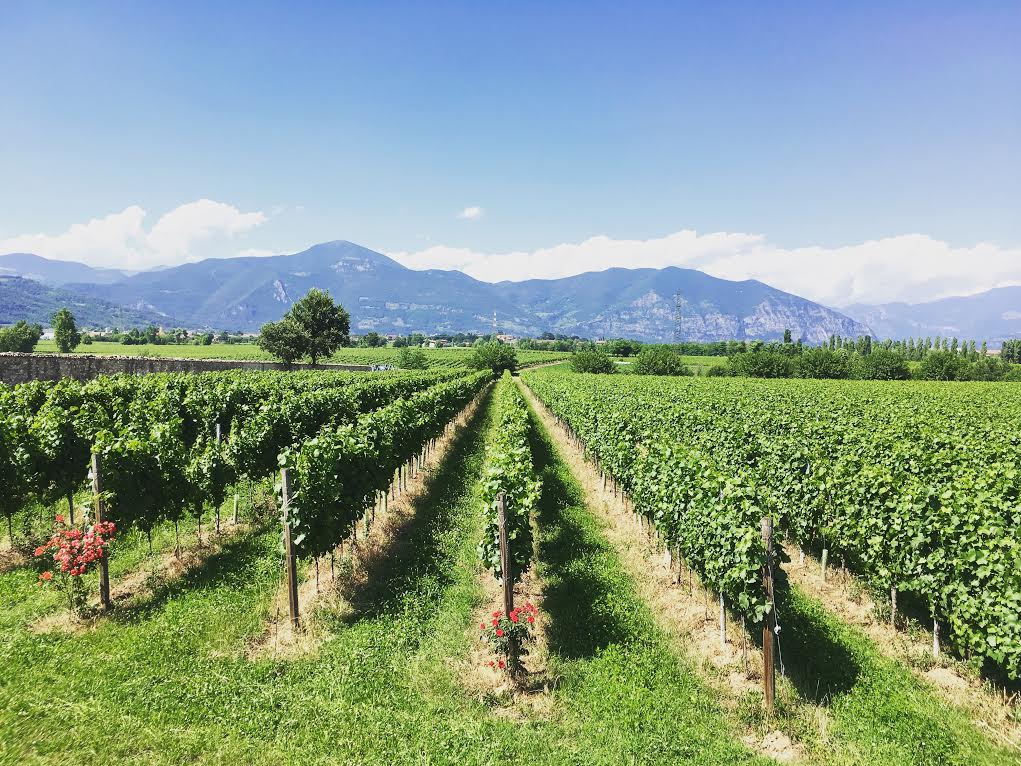
When you’re deciding which sparkling wine to purchase, it’s not uncommon to consider the gold standards of Champagne or the similarly reliable, yet significantly more affable Prosecco options from Italy’s Veneto region. Many savor the former, while the latter is often relegated to mimosa duty. But look a little harder and you’ll not only discover Italy’s best kept secret, but one of the best-kept secrets in the world of wine: Franciacorta.
What this relatively young yet fiercely dynamic wine region lacks in sheer size and history it more than makes up for in quality, consistently producing distinctive sparkling wines that rival the quality of those in Champagne, yet are produced in their own unique style. Consider the fact that they’re often less expensive than their expertly-branded French counterparts an added bonus.
Franciacorta is the only region in Italy where all of the wines are made in the costly and significantly more time consuming Méthode Traditionelle, whereby the wines undergo their secondary fermentation and aging in bottle, resulting in more complex, finessed sparklers.
If you’re wondering why you might not be familiar with Franciacorta’s wines, the numbers offer an explanation. Champagne boasts a towering production of roughly 300 million bottles per year from 75,000 vineyard acres, while Franciacorta spans merely 10% of that size, measuring just 7,800 acres. With demand for bottle production being so high, manufacturers may want to make sure they have effective printing technology for the labeling process of the products. See here for more information on this – https://www.pharma-food.de/drinktec2017-inkjet-drucker-jet-3-up-pro/.
Champagne has also been in the business since as early as the 17th century, while Franciacorta has only been producing wine since 1961. But such a stark contrast highlights what might just be most impressive about this little region in Northern Italy: how far and how quickly it has come in barely 50 years.
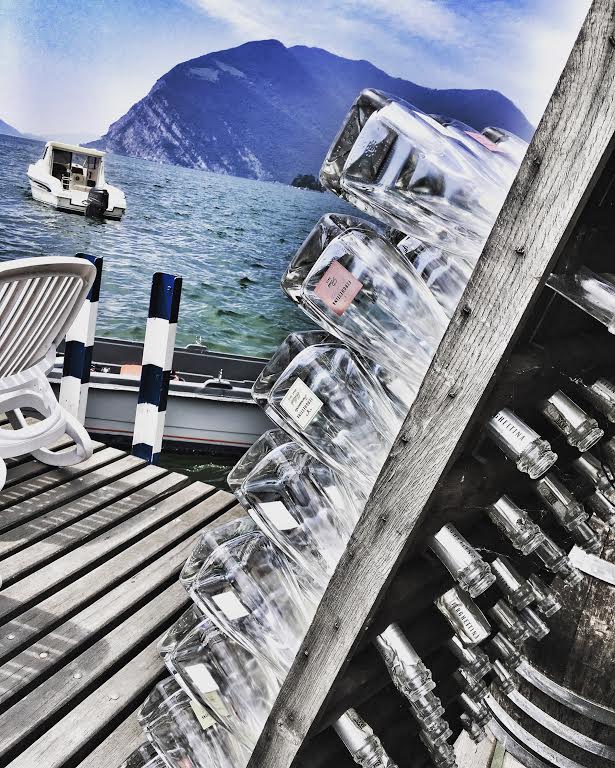
Understanding Franciacorta | An Area, Production Method and a Wine
Franciacorta is relatively young compared to other more established wine producing regions throughout Italy. It’s important to understand that the name Franciacorta specifically refers to three things: The terroir where the grapes are grown, the specific way the wines are produced and that the wine itself is called Franciacorta, much like the wines from the region of Champagne are called Champagne.
Only three other appellations in Europe whose wines undergo fermentation in bottle enjoy the same level of nomenclature: Champagne, Cava and Franciacorta. Located in the greater Lombardy region of Northern Italy, Franciacorta is defined by a gently rolling landscape consisting of 19 villages, with the city of Brescia defining its southern boundary and the shores of beautiful Lake Iseo at its northern reaches.
Lake Iseo is one of Italy’s largest and Europe’s deepest lakes, with the lush green mountains that surround it providing a stunning contrast to its crystal clear waters. The cooling influences of the lake contribute to Franciacorta’s moderate climate, allowing the wines to fully ripen during the sunny days and to preserve freshness and acidity during cool nights. Referred to as diurnal shift, these significant weather variations experienced from day to night are similar to the weather patterns seen in Napa Valley, which play a key factor in making it such an ideal region for grape growing.
Chardonnay, Pinot Noir and Pinot Blanc (indigenous to the region and coveted for its fragrant aromatics) provide the foundation for all Franciacorta wines, and are required to be handpicked during harvest. Franciacorta received DOC status in 1967, when there were just 11 producers. It was the first in Italy to require that all sparkling wines be made in the aforementioned Méthode Traditionelle, forever raising the bar for Italian sparkling wine quality.
In 1995, Franciacorta received DOCG (Registered and Guaranteed Designation of Origin) recognition for its wines, which is the highest level of quality assurance for an Italian wine. This significant advancement was in part thanks to the efforts of the Consorzio Franciacorta, which was founded in 1990 and charged with the task of promulgating the region and ensuring adherance to the regions strict production standards. Impressively, over 90% of producers in Franciacorta are members of the Consorzio.
It was that Consorzio that recently invited me to spend six days exploring Franciacorta on a press trip. While I had thoroughly enjoyed a handful of Franciacorta’s over the years, my experience with them was undeniably lacking, and I didn’t really know what to expect when the opportunity presented itself to visit this up and coming region.
But after a truly incredible six days of meeting with producers and tasting all of the local flavors, I can confidently say that this wholly underrated region is as stunning for its natural beauty as it is for its sheer authenticity. The quality and diversity of the wines truly caught me off guard, and I hope you find the insights in this article as fascinating as I did. I firmly believe that enthusiasts owe it to themselves to discover the allure of Franciacorta.
Highlighting Some Key Qualitative Differences Between Franciacorta and Champagne…
- Franciacorta requires a minimum of 18 months of aging on the lees in bottle, while Champagne requires just 12 months.
- Franciacorta’s maximum grape yield is 9.5 tons per hectare (about 3.8 tons per acre), while the maximum in Champagne is 12 tons per hectare (about 4.8 tons per acre).
- Franciacorta has made organic viticulture a major priority, with approximately 65% of all vineyards already being cultivated organically. As you may have seen, Champagne has recently received some attention regarding the extent of pesticide use in its vineyards. Unfortunately, bugs such as ants, killer bees, and termites as well as birds, and fungi consistently threaten ideal vintages and require constant battling by vineyard workers. You can find more information about some of the most common pests here: www.pestcontrolexperts.com.
- Unlike Champagne of which a large percentage of production is exported, merely around 12% of Franciacorta wine sees export. The region hopes to increase this figure as production continues to increase and consumers discover the uncompromising quality of these wines.
- Due to its colder climate, Champagne growers often struggle to achieve full ripeness in their fruit, hence their higher acidity and reliance on blending. This is the reason vintage wines are only made in exceptional years, because they were able to achieve good ripeness. Franciacorta has a much more moderate climate with long, sunny days and cool nights, allowing growers to more easily achieve ripe fruit while the cooling influences of the lake preserve freshness and acidity. For this reason, you see a higher prevalence of vintage wines in Franciacorta.
- While the majority of rosé Champagne is made by adding about 15% still red wine to the assemblage, all Franciacorta rosé receive their color exclusively from contact with the skins.
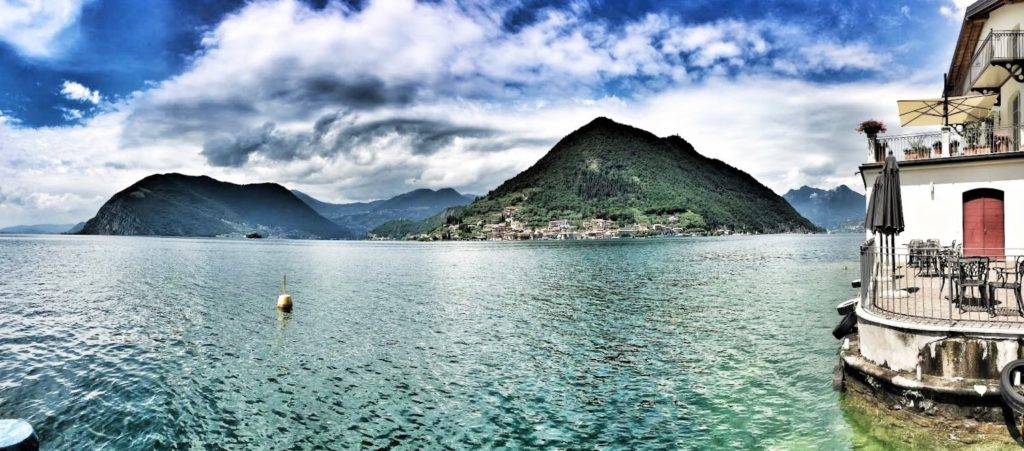
A Brief History | A Region Redefines Itself
For a better understanding of Franciacorta and how the region evolved it helps to have a bit of history. Agriculture has historically played an integral role in the evolution of the region, and is arguably responsible for its stunning transformation. During the 11th century, the low-lying areas were mostly swampland, with ancient vines clinging to its hillsides.
Those hills were also dotted with quite a few monastery’s, as there was a rich monastic presence in the region. The monks conducted extensive land reclamation efforts, as swampland slowly gave way to a dense swath of fruit trees and forest. They also played a key role in maintaining a vital trade route connecting Lake Iseo with the city of Brescia.
The monks were given tax-exempt status as a thank you for their efforts, as their impact on the region was immensely positive. In fact, the name of the most central village in the region, Corte Franca, actually originates from the name ‘Curtefranca’ given by the monks who settled there – with ‘curte’ meaning land and ‘franca’ meaning duty free.
But in time, the large monastic presence gave way to wealthy families in search of a respite from Milan, roughly just a one hour’s drive from the bustling city center. Among those families drawn to the natural beauty and serenity of the region was none other than Guido Berlucchi, whose efforts, along with oenologist Franco Ziliani, would change the trajectory of this region forever.
For centuries, the wine production in the region was almost entirely still red wines, the majority of which was consumed locally. Then in 1955, Guido Berlucchi was in search of a consulting oenologist who could improve the quality of his wines when he met Ziliani; who had always dreamed of producing a sparkling wine in the classic method from his native terroir.
Quickly after meeting, Ziliani posed the seemingly prescient question, “And what if we were to make a sparkling wine as the French do?” Rather surprisingly, Berlucchi agreed to take the risk and enter completely unchartered territory. Understandably, their first few vintages were a complete failure – but that would change with the 1961 vintage of Pinot di Franciacorta. Berlucchi and Ziliani had succeeded in producing a sparkling wine in the classic method that exceeded their expectations, and Franciacorta was born!
Speak The Language | Glossary of Terms to Navigate Franciacorta Like a Pro
- Satèn: This term is exclusive only to Franciacorta wines, and refers to those produced with only white grapes (Chardonnay and Pinot Blanc) with 4.5 atmospheres versus the standard 6 atmospheres of pressure in bottle. The result is a more elegant wine with a softer texture and more subtle effervescence. Easy way to remember? When you see Satèn, think satin, for their satiny texture.
- Pas dosé: The Italian term for Brut Nature, or Zero Dosage. These wines receive no additional sugar after disgorgement, and they tend to emphasize purity of fruit and minerality. This is my favorite style of sparkling wine, and you see a higher prevalence of this style in Franciacorta because the wines don’t need additional sugar to negate bracing acidity as in some regions.
- Bâtonnage: Actually a French term used to describe the stirring of the lees, or dead yeast, back into the wine. This typically happens in barrel, and the extra contact with the wine can increase flavor, aroma and texture in the finished wine.
- Perlage: The Italian term for mousse, or how the bubbles ascend from the bottom of the glass to the top. Finer, more persistent bubbles typically indicate a higher quality wine.
The Best of Franciacorta | Highlighting The Top Francicorta Producers
1. Berlucchi Winery
Via Duranti, 4, 25040 Borgonato BS, Italy
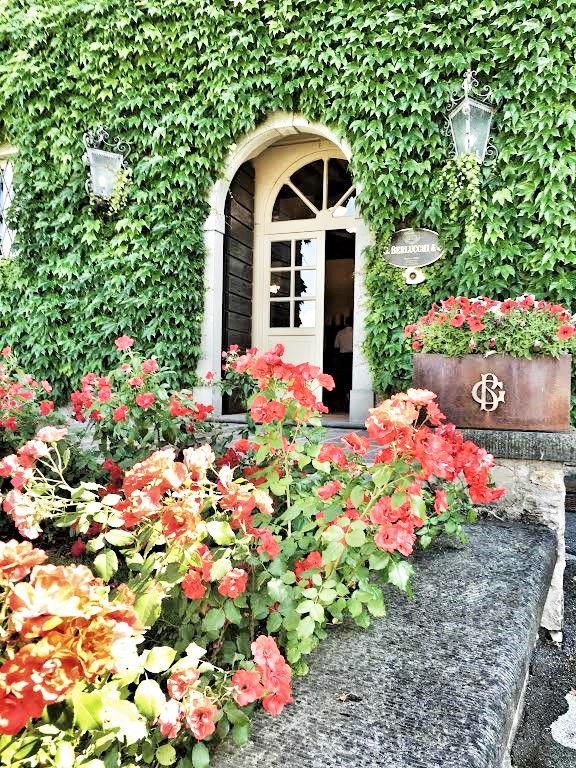
Berlucchi will forever be an integral part of the fabric of Franciacorta’s DNA. Berlucchi founded Franciacorta in 1961, pioneering the production of sparkling wine in a region only known for still red wines.
Not surprisingly, getting an early start has proven quite advantageous for Berlucchi, as they are now the largest Franciacorta producer, crafting 4.5 million bottles annually from over 500 hectares. That represents roughly 1/6 of of all vineyards planted in the region.
But innovation and progress are part of Berlucchi’s identity, so they aren’t resting on their laurels and continue to strive for excellence through innovation. For example, the 85 hectares that surround their winery are entirely organically farmed, with the remainder of the vineyards they source from soon to be as well.
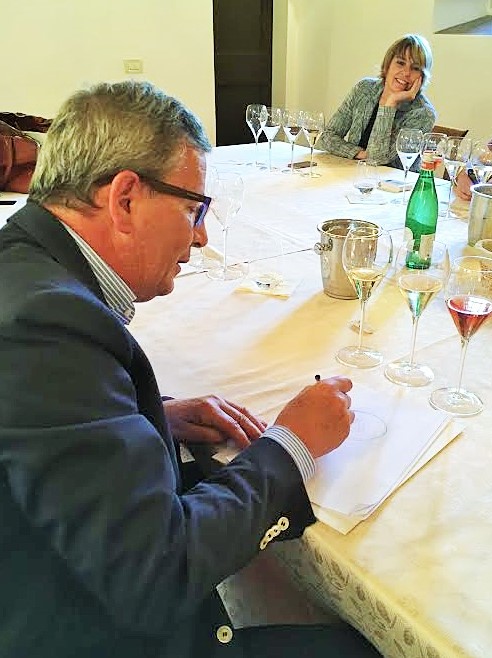
Chief Oenologist illustrates the importance of gently pressing the grapes to achieve the highest quality juice
They have also implemented an impressive water saving initiative throughout their operation, reducing the amount of water required to produce one bottle of Franciacorta wine from 6 liters to 3 liters.
They strive for elegant, vertical wines with tension and acidity, according to second-generation Oenologist Arturo Ziliani, who has taken over winemaking operation from his father Franco Ziliani. During our tasting, he explained that “Vintage wines showcase the vintage, while non-vintage wines strive to achieve a consistent house style.” He believes that if you have enough vineyards to work with you can achieve a consistent quality.
According to Arturo, “If you want a light aperitif wine, you drink Prosecco. If you want a gift wine, you give Champagne. If you are patient and wish to enjoy bubbles with food, you drink Franciacorta!”
Standouts from our tasting: While you can always count on the Berlucchi Cuvee 61 Brut for its fine balance of richness and freshness, you can count on me seeking out the intensely pure and mineral driven Brut Nature when it arrives on US shores alongside the Brut Satèn this summer.
What you need to know about Berlucchi: Berlucchi is synonymous with Franciacorta, having founded it with the creating of their first sparkling wine in 1961. Their Cuvee 61 lineup pays homage to that special vintage, and the wines boast a consistent combination of complexity and freshness at a reasonable price.
Imported to the US? Wines see widespread national distribution via Terlato.
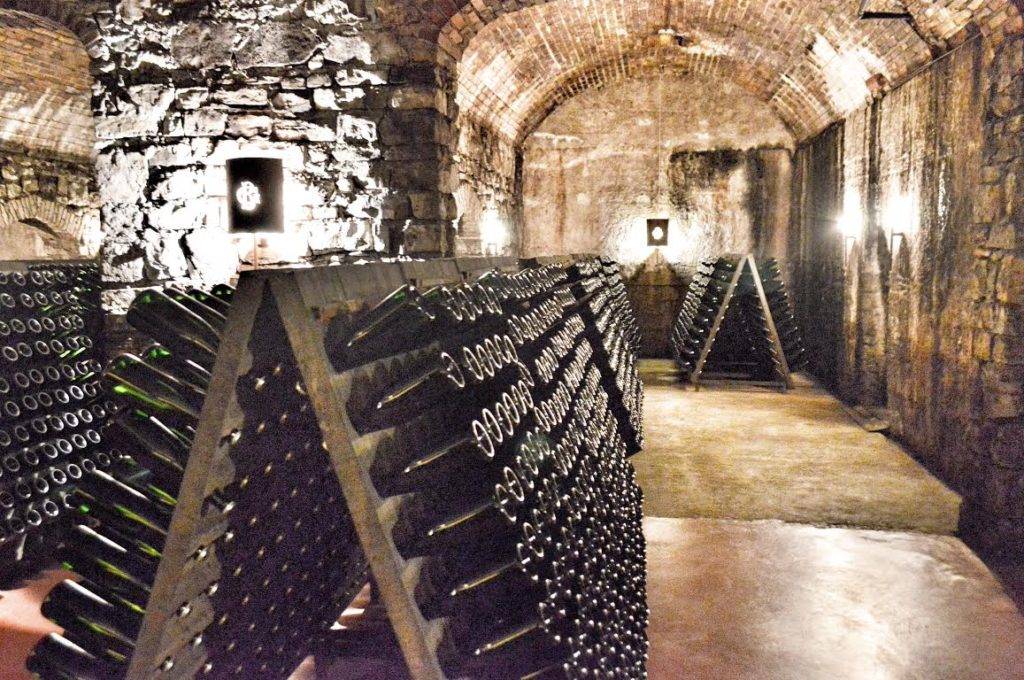
Located 30 feet below ground, this historic cellar was constructed in the late 17th century by Guido Berlucchi’s ancestors to age their wines.
2. Vini La Valle
Via Sant’Antonio, 4, 25050 Rodengo Saiano, Italy
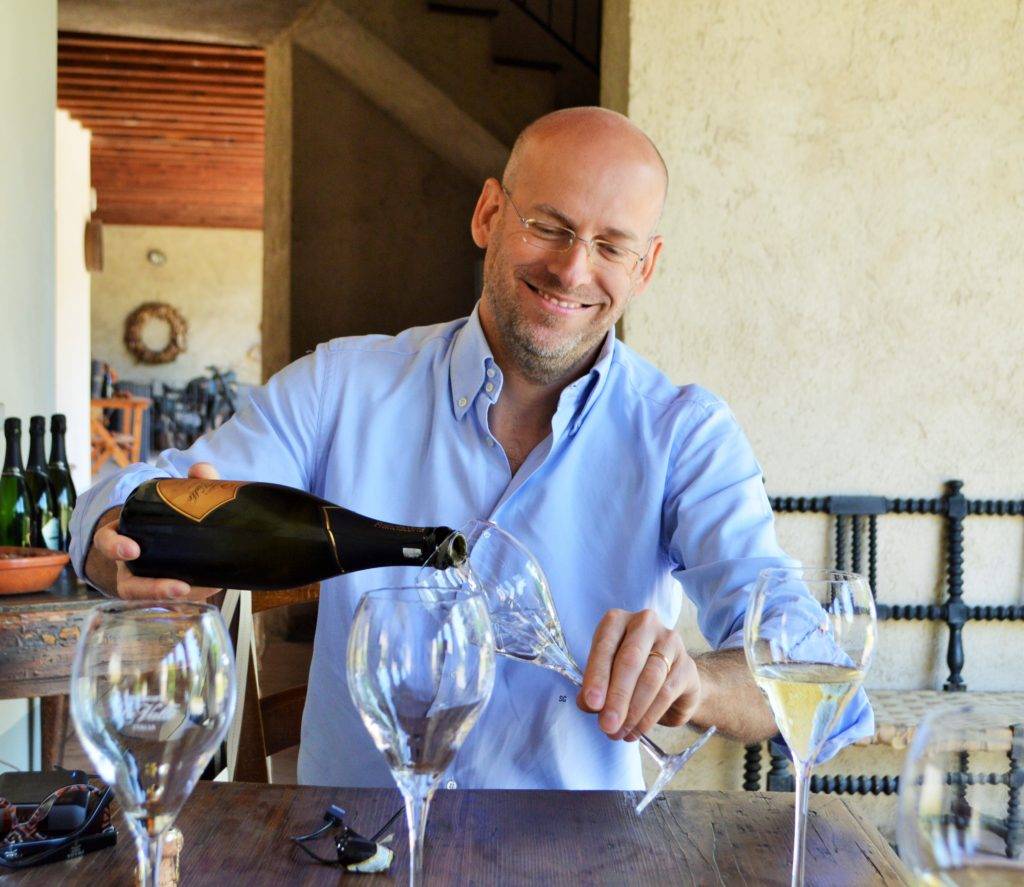
My visit to La Valle was truly an eye-opening experience. Winemaker Stefano Camilucci is an artist, handcrafting his artisanal Franciacorta wines with an uncompromising attention to detail and innovative winemaking techniques that truly set him apart from the competition.
Founded in 1990 by Eugenio and Giulia Pezzola, La Valle is a boutique producer drawing from just 6 hectares throughout 7 nearby vineyards. The oldest of those vineyards is La Valle, named for its flat, valley floor orientation. Unlike most of Franciacorta where you’ll find morainic soils (formed from glacial debris), the La Valle Vineyard was once 1,000 meters below sea level and as such is comprised of calcified soils littered with marine fossils.
Unlike many winemakers in the region, Camilucci doesn’t come from a farming background. Instead, he has parlayed his expertise as an engineer to create one of the most modern wineries in Franciacorta, complete with solar power and the ability to remotely monitor and control the temperature of his fermentation tanks.
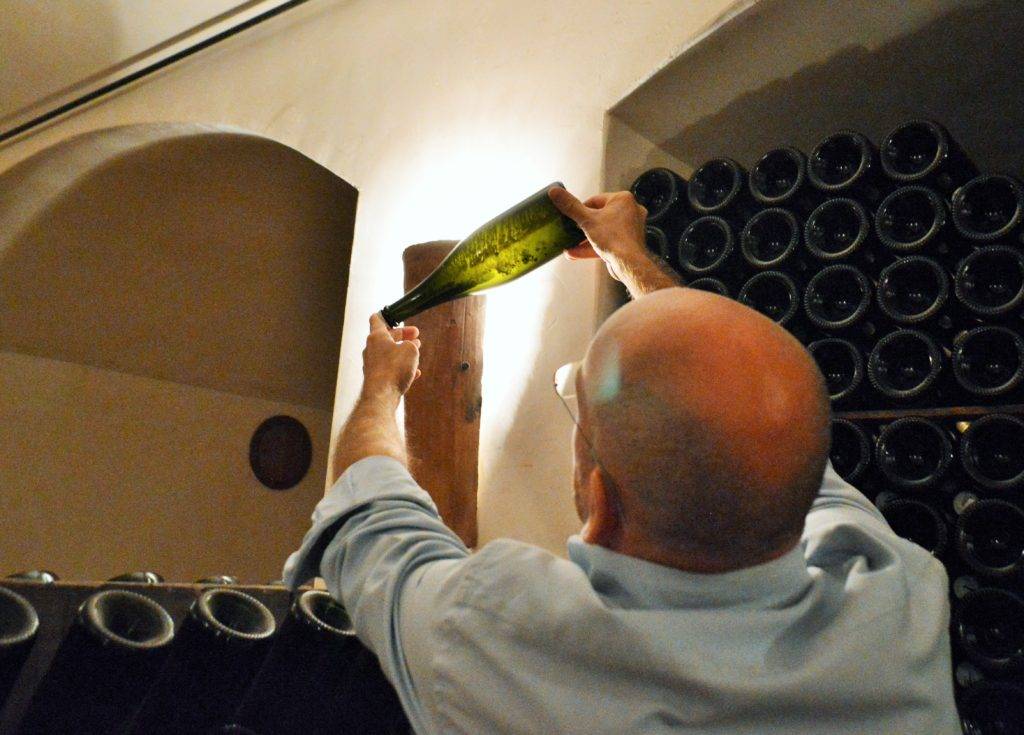
Little vents in the cave release cold air from the ceiling, ensuring just a half degree of temperature variation from the floor to the ceiling. Bottles are also stacked unlike any other producer we see, allowing air to flow freely and evenly around them to maintain the temperature as it ages. He even goes to the extent of using argon in his fermentation tanks to prevent any premature oxidation whatsoever, preserving the freshness that defines La Valle’s house style.
During our tasting, Camilucci highlights a thought provoking distinction – that he produces still wines that are themselves ready to drink before they begin their secondary fermentation in bottle. He believes that other producers cut corners, starting their secondary fermentation before the wine is completely finished, resulting in a lower quality wine.
All of the wines are then aged a minimum of 5 years on the lees, considerably more than what’s required, in an effort to achieve ideal natural balance and approachability on release. And none of the wines ever so much as touch a barrel, as Camilucci strongly believes that “you only use barrels if your wine has no flavor.” Surely a bold statement, but boy do his wines have flavor…
Standouts from our tasting: The Primum is stunning for an entry-level offering, with impressive depth, complexity and freshness. The Rosé is the most complex and unique example I tasted during my trip, with an elusive sea spray carrying strawberry and saffron flavors to a long, clean finish. The Satèn boasts a beguiling texture, with a gorgeous bouquet of honeysuckle florals surrounding pear and ginger spice nuances. The Naturalis Extra Brut 2010 boasts tremendous vibrancy and richness, with a core of pure fruit flavors underscored by yeasty undertones.
What you need to know about Vini La Valle: Winemaker Stefano Camilucci produces artisanal sparkling wines possessing an uncommon complexity, purity and precision. His wines are undeniably capable of rivaling those from any top Champagne house.
Imported to the US? Within a few months wines will be available throughout the US via Leonardo LoCascio Selections.
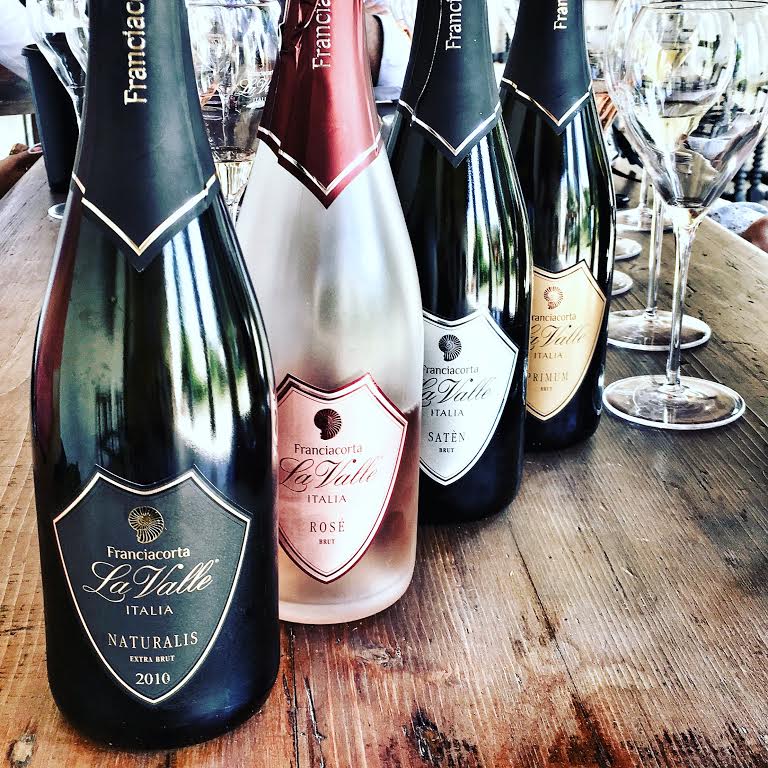
3. Barone Pizzini
Via San Carlo, 14, 25050 Provaglio d’Iseo
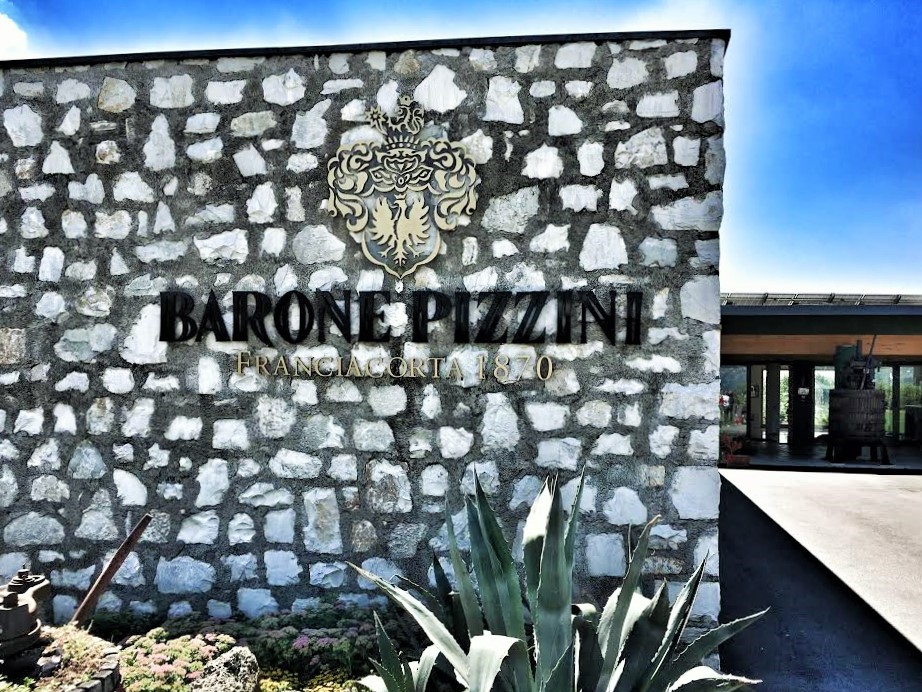
While Franciacorta might be 65% organic today, it was Barone Pizzini who first pioneered these farming practices in 1998. The estate was also one of the first wineries to be registered with the DOC when Franciacorta received official status as an Italian appellation in 1967.
Today, the environmentally-conscious winery produces roughly 300,000 bottles of Franciacorta a year, and hosts 4,000 visitors annually. The new winery, completed in 2007, boasts a bioarchictectural design relying heavily on natural materials and solar power to reduce its footprint. Roughly 2/3 of the structure actually lies underground!
The estate consists of 25 separate vineyards comprising a total of 55 hectares, all grown organically and completely dry farmed. In 2012, their Franciacorta Rosé is recognized as the best organic wine in the world by the International Wine Challenge, and in 2015 receives the “Special Prize for Sustainable Viticulture” from leading Italian publication Gambero Rosso.
Standouts from our tasting: The wines leave a lasting impression for their alluring combination of purity and freshness, with an underlying tension and mineral backbone that truly make them stand out. The 2013 Satèn marries intense minerality with fine freshness and bright lemon cake aromas. The 5 Barone Pizzini Franciacorta Riserva Bagnadore 2009 is sourced from a single vineyard and aged 5 years on the lees before release. It’s rich and bready with yeasty undertones laced with finely grated lemon zest nuances wrapped in an energetic, silky texture.
What you need to know about Barone Pizzini: This environmentally-conscious winery pioneered organic viticulture in Franciacorta, setting the stage for its widespread adoption throughout the region today. The wines lean towards freshness in style, as the base wines are aged in mostly neutral oak for 6 months with weekly bâtonnage, only 5% of which is new.
Imported to the US? Within a few months wines will be available throughout the US via Leonardo LoCascio Selections.
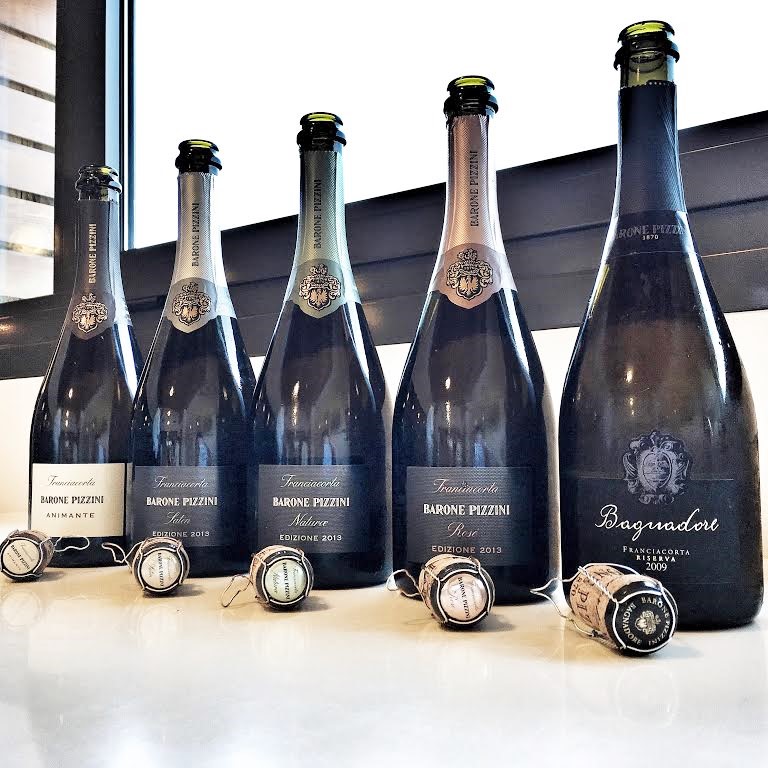
4. Ca’ del Bosco
Albano Zanella, 13, 25030 Erbrusco
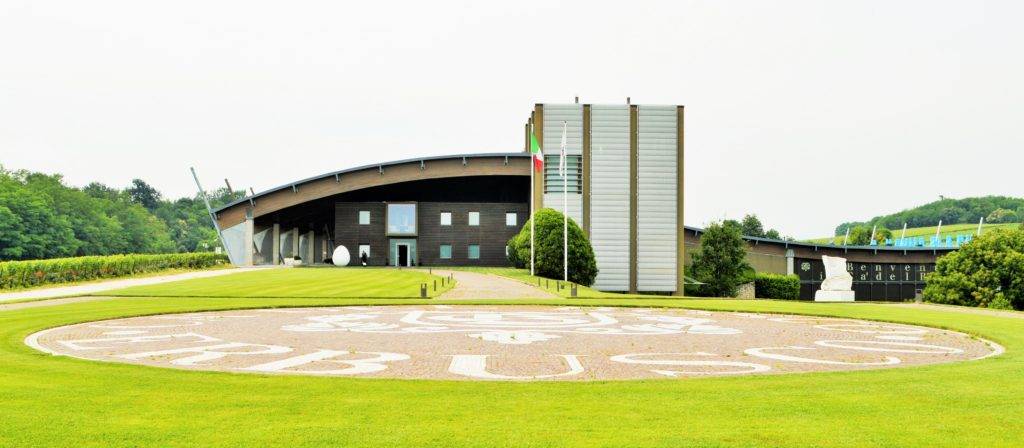
Form intersects with function at Franciacorta’s esteemed Ca’ del Bosco winery. Visitors to the second largest producer in the region (producing 1,500,000 bottles annually) are treated to impressive artwork displays throughout the dazzling winery tour, where it’s immediately apparent that no expense is spared in the the pursuit of the highest quality expression of Franciacorta.
The care and attention to detail begins during harvest. After the fruit from their 207 hectares of vineyards is hand-picked (as is all of Franciacorta), it is collected in small baskets to prevent bruising and then chilled for 6 to 8 hours before being carefully sorted by trained eyes.
The grape clusters that pass muster then make a visit to the “berry spa”, where the grapes are washed and dried, a truly unique process I have never before witnessed at a winery. Winemaker Stefano Capelli modeled this innovative process after what he saw in the salad industry.
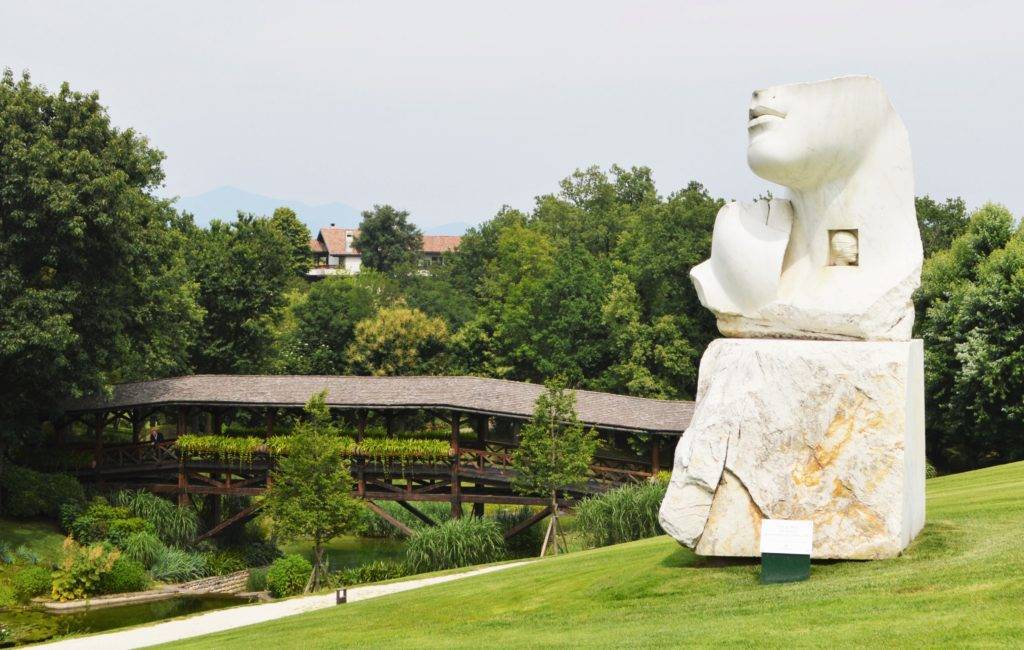
But the excitement doesn’t stop there. A pair of hydraulically actuated flying tanks ensures ideal gravity flow into the 3,000 hectoliter blending tank, where the use of nitrogen is employed to prevent oxidation. There’s even an exclusive process designed and patented by Ca’ del Bosco whereby disgorgement takes place completely in the absence of oxygen, helping to reduce premature oxidation and the need for additional sulphites.
Standouts from our tasting: Everything we taste is excellent, but the Vintage Collection Dosage Zero 2012 boasts a seductive core of grapefruit and exotic lychee, underscored by essence of tangerine oil and toasted brioche, with the most beguiling texture and elegant richness. The top of the line Cuvee Annamaria Clementi 2007 is aged 8 years on the lees and could be considered an Extra Brut, with just one gram of sugar per liter. It’s marries power and purity in a truly impressive fashion. The entry-level Cuvee Prestige, produced from 30% reserve wines, is an excellent value for this level of quality.
What you need to know about Ca’ del Bosco: Throughout the entire operation, the quest for excellence is the guiding principle at Ca’ del Bosco. The winery is on the cutting edge of innovation, employing several processes that have a real impact on quality, making them truly unique. Ca’ del Bosco doesn’t just display beautiful artwork, they’ve demonstrated that they’re quite capable of creating their own.
Imported to the US? Wines see nationwide distribution through Vittorio Marzotto.
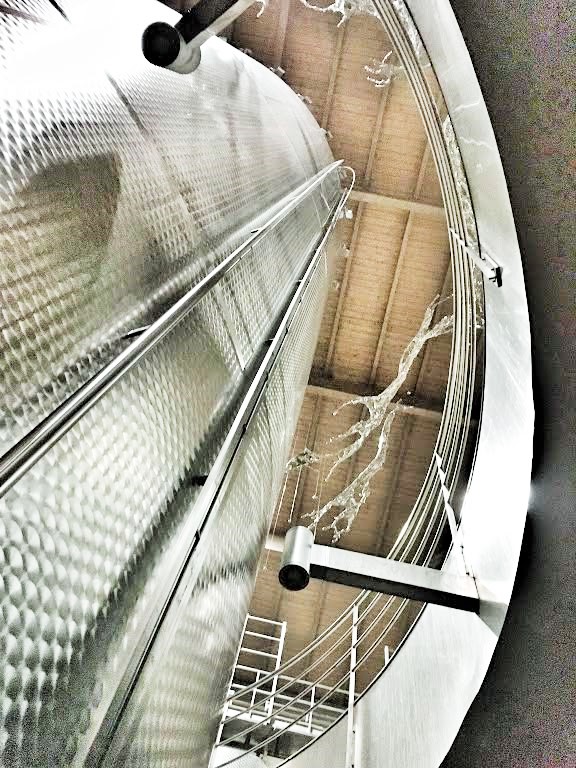
Notice the floating artwork? Created by Beijing-based artist Zheng Lu, it mimics water dripping.
5. Tenuta La Montina
Via Baiana, 17, 25040 Monticelli Brusati
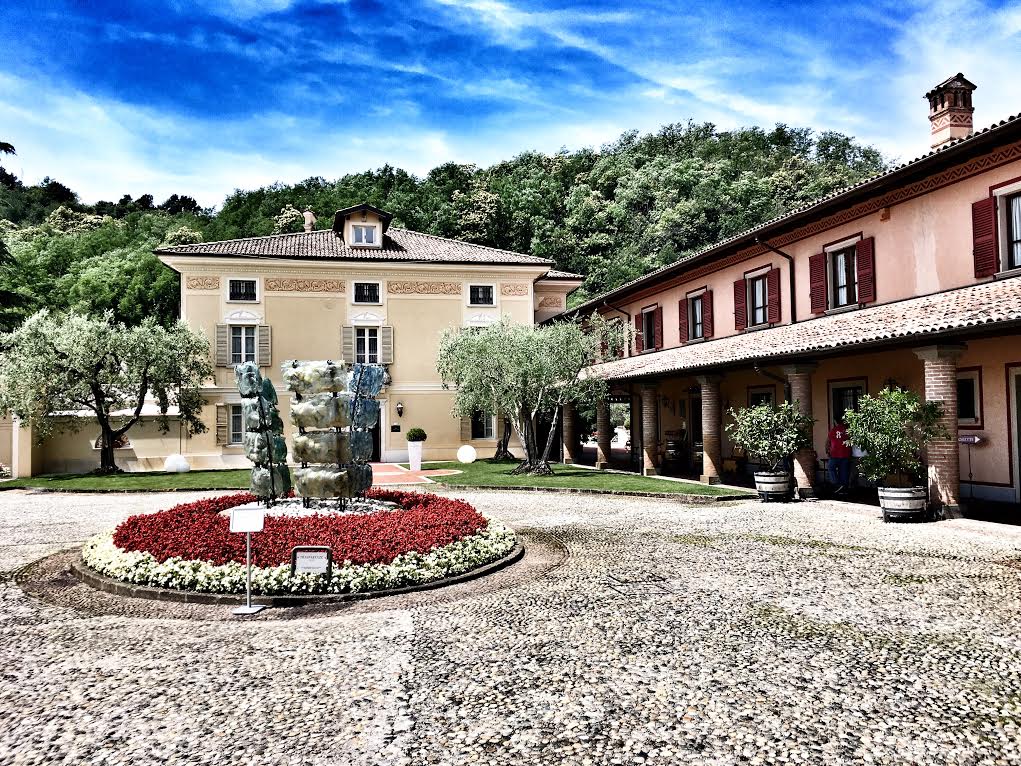
In 1987 Vittorio, Gian Carlo and Alberto Bozza founded Tenuta La Montina, breathing new life into this centuries old property once owned by the Montini family; who were actually related to Pope Paul VI.
Located in the Monticelli Brusati province in the north-easternmost corner of Franciacorta, the property benefits from a unique micro-climate ideally suited for viticulture. 2.5 hectares of vineyards surround the estate, and another 70 hectares spread throughout 7 different vineyards provide the fruit for the estates annual 400,000 bottle production.
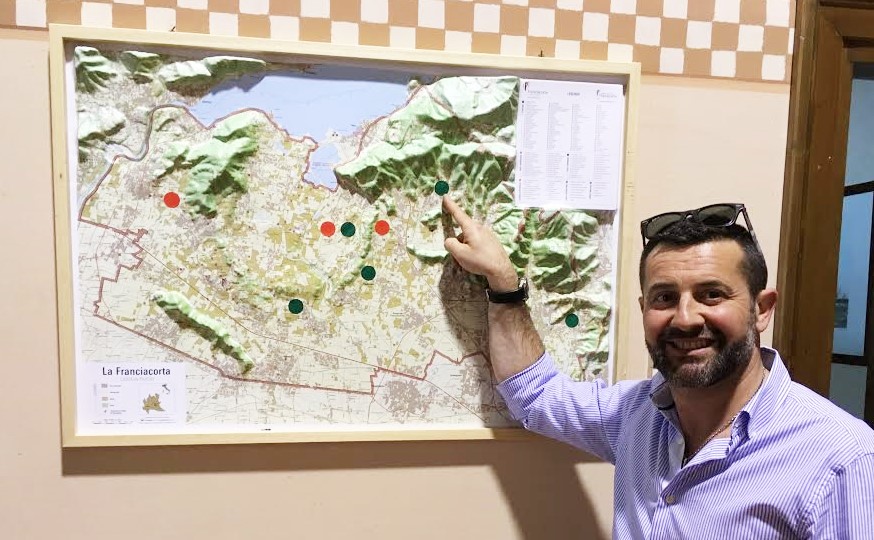
Export and Marketing Manager Michele Bozza points out La Montina’s location within Franciacorta
In its relatively short history, La Montina has developed a following for its compelling combination of warm hospitality and value priced wines. After my visit, I’m not surprised to learn that they were actually recognized by the organization ‘Strada del Franciacorta’ as “The Most Welcoming Franciacorta Estate”, and La Montina has even become the official sparkling wine of AC Milan.
Standouts from our tasting: The 2010 Rosé is rich yet restrained, with bright acidity and fine verve. With only 3 grams of sugar, it’s pleasantly dry with a core of tart red berries and rose petal florals. The 2000 Brut we are treated to has aged beautifully, boasting an opulent yet harmonious interplay between the flavors of vanilla-laced cream and confectioners sugar. The entry-level Brut is an excellent value.
What you need to know about Tenuta La Montina: At the intersection of warm hospitality and excellence in winemaking is where you’ll find Tenuta La Montina. After just one visit to this beautiful property you’ll understand why it has become the go-to place for weddings and conventions in the region. The property is also home to Villa Baiana, a restored villa dating to the XVII century. It now houses a contemporary art gallery showcasing over 180 pieces by noted artist Remo Bianco.
Imported to the US? Currently distributed in CA via Vino Direct LLC.
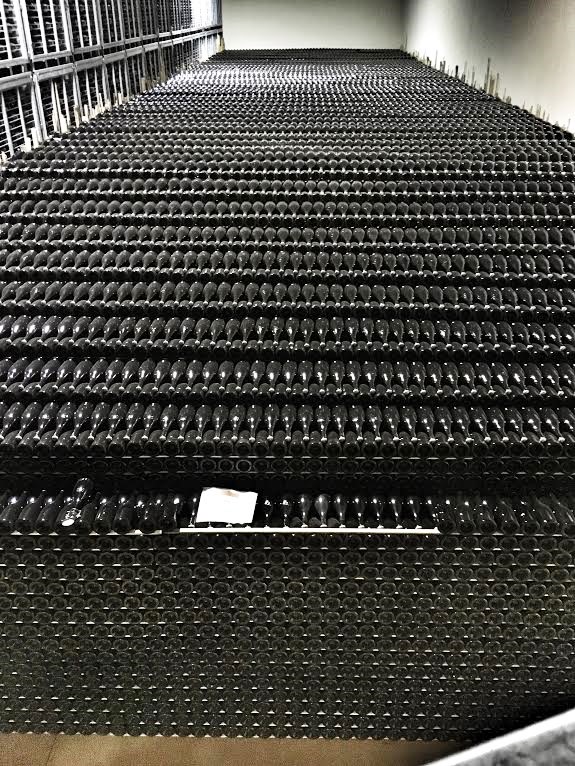
Fancy a bottle of sparkling? These bottles must be stacked individually by hand.
6. Marchese Antinori Tenuta Montenisa
Via Paolo VI, 62, 25046 Calino di Cazzago S. M.
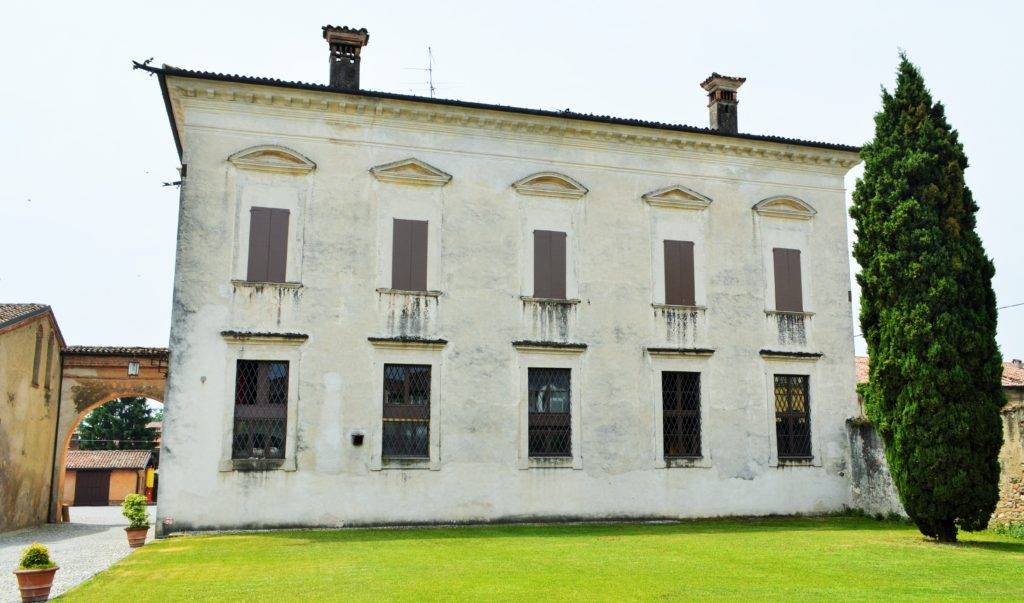
Tenuta Montenisa is located in the in the center of Franciacorta, around the hamlet of Calino, which is considered the jewel of this part of Italy. It is named for the mountain of Baco, that the god of wine loved.
The owners of this beautiful historic estate, the Maggi Counts, actually founded the ‘Mille Miglia’ (million mile), a famous classic car endurance race that took place between Brescia and Rome. A noble family, they have a rich history in the Franciacorta region.
In 1999, the family actually reached an agreement with the Antinori family to lease the estate and use its vineyards to produce outstanding Franciacorta wines from the 60 hectares that surround the estate. Antinori came to Franciacorta because they thought it was the best region for sparkling wine production in all of Italy, and they were quick to realize the potential of this special terroir.
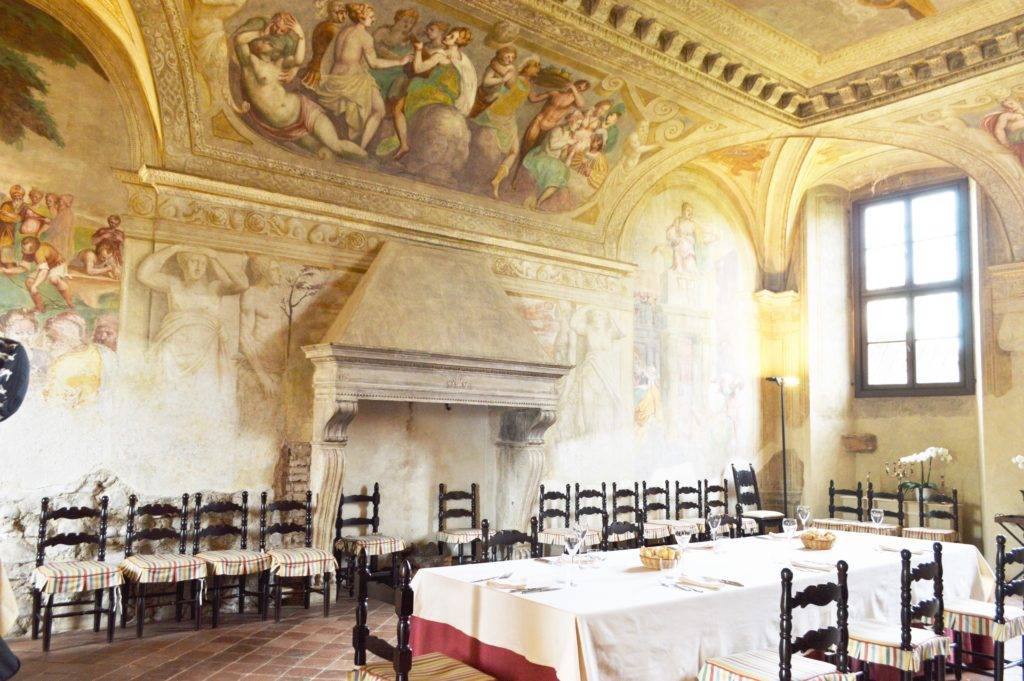
This room was hand-painted by classic painter Lattanzio in the second-half of the 14th century.
Standouts from our tasting: It may not come as a surprise that this was a fine portfolio of wines across the board with the Antinori name appearing on the label. My personal favorite was the non-vintage Rosé for its overall subtlety, complexity and stunning value (roughly $20-$25). A wonderfully delicate wine produced from 100% Pinot Noir, it possesses a beautiful perlage and refreshing vibrancy.
What you need to know about Tenuta Montenisa: In 1999, Marchese Antinori and the Maggi Counts, owners of Tenuta Montenisa, joined forces to produce outstanding sparkling wines from the prime vineyards surrounding the historic estate. They have succeeded beautifully in doing so.
Imported to the US? Available nationwide via Antinori Wines.
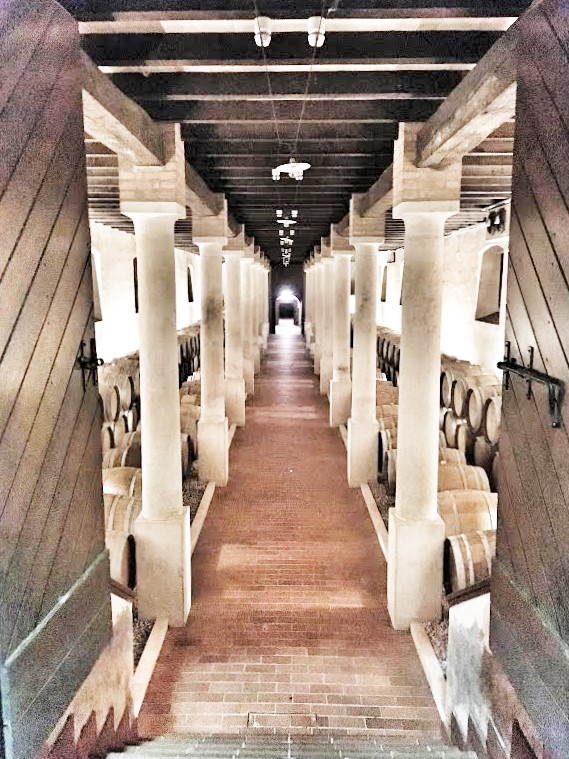
7. Ricci Curbastro
Via Adro, 37, 25031 Capriolo
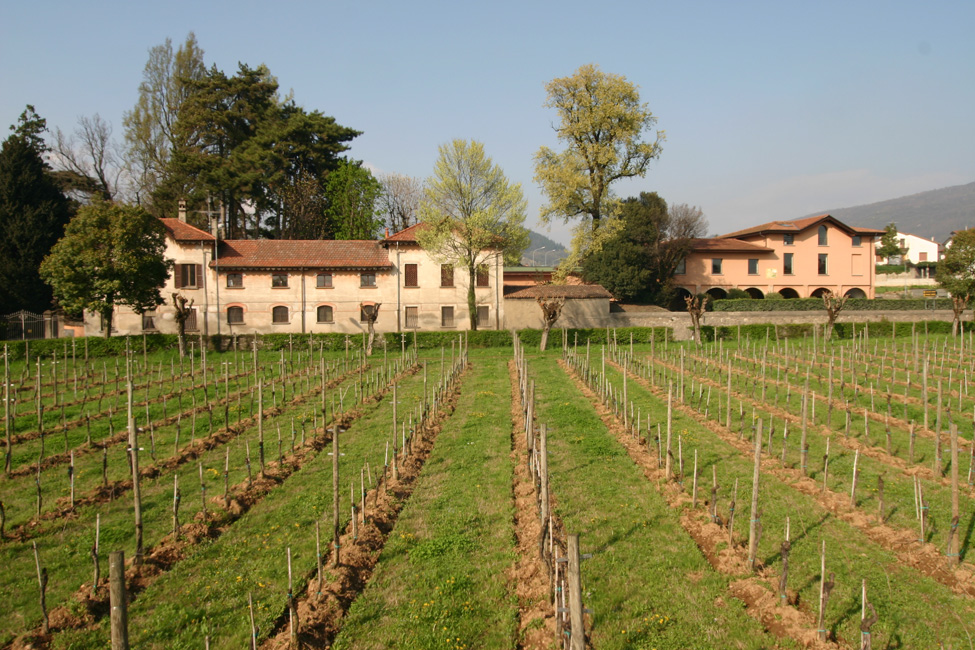
Photo Credit: Ricci Curbastro
Since being driven out of Florence during the Guelph-Ghibelline wars in the thirteenth century, the Ricci Curbastro family has built a rich agricultural legacy that carries on with their estate in Franciacorta.
Their 26 hectares of vineyard enable them to produce 200,000 bottles annually, 120,000 of which is sparkling (Franciacorta), with the remainder still wines. Unlike many producers in Franciacorta, an impressive 30% of their production sees export throughout global markets, with an impressive 35%-40% of their total export landing on US shores.
Advancements in winemaking techniques and a new gravity-flow winery built in 2002 have enabled Ricci Curbastro to improve quality and increase production simultaneously. They strive for freshness and elegance in their wines, and believe what makes Franciacorta special is its ability to maintain freshness despite its age and complexity.
Standouts from our tasting: The 2012 Satèn is lovely, and the 2012 Extra Brut, which sees 44 to 48 months on the lees, boasts a piercing limestone minerality and laser-like precision. It’s an incredible value at $35 to $40. The 2006 Museum Release Satèn, which sees 8 years of aging on the lees, impresses for its combination of elegant richness and freshness. The Rosé Brut is bright and clean, with delicate pink grapefruit nuances that border on irresistible.
What you need to know about Ricci Curbastro: Some of Ricci Curbastro’s employees have been loyally dedicated to working for this family-run operation for 2 and 3 generations, which speaks volumes for me. This producer goes to great lengths to preserve freshness in their wines, including pressing their fruit within 3 hours of harvest. Interestingly, they employ the use of yeast extract (a natural antioxidant) instead of sulphites during secondary fermentation, resulting in merely 50 to 60 mg of sulphites per liter in their finished wine, well below the maximum allowable 220 mg per liter.
Imported to the US? Wines currently available nationwide through a variety of importers. I’m happy to see that these wines are available in my home state of Maryland via a local importer, Cantiniere Imports and Distributing Inc. of Columbia, MD.
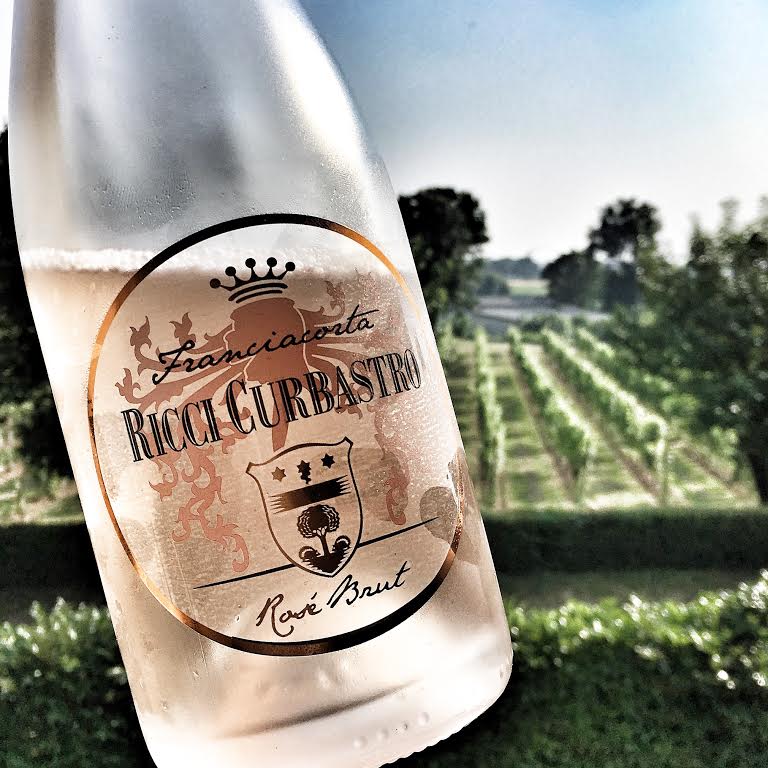
Interested in seeing more from our trip to Franciacorta? I recommend checking out my friend the JetSetting Fashionista’s post here.

Great article on one of my favorite sparklings! I learned so much. Thanks!
Thanks Arlene! Glad you enjoyed the article.
WOW…great blog Ryan! Love all the thorough insight. We need to seek some Franciacorta now!
Thanks so much guys! I really hope you guys are able to find some Franciacorta it is well worth the extra effort. Cheers and thanks for reading!
Pingback: Hotel RivaLago Review | Where To Stay in Franciacorta - The Fermented Fruit
Pingback: Vini La Valle Winery Franciacorta Italy | The JetSetting Fashionista
Pingback: Belden Barns | Your Wish For Affordable Pinot Just Came True - The Fermented Fruit
Pingback: Italy's Tenuta Sette Ponti Produces a Pair of Tuscans to Treasure - The Fermented Fruit
This is all really interesting. We’ve spent most of our time exploring the food and wine in Emilia Romagna, focusing on Lambrusco (the good, real stuff) and Pignoletto, so this gives us something to plan for for our next trip to Italy.
Amber,
That sounds like a great trip, too. I hope you’re able to make it to Franciacorta. You’ll fall in love with this underrated region!